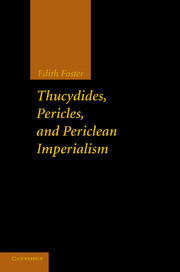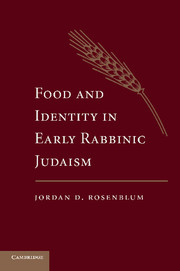Refine search
Actions for selected content:
23990 results in Ancient history
20 - Kronos and the Titans as Powerful Ancestors: A Case Study of the Greek Gods in Later Magical Spells
- from PART III - DIACHRONIC ASPECTS
-
-
- Book:
- The Gods of Ancient Greece
- Published by:
- Edinburgh University Press
- Published online:
- 05 August 2013
- Print publication:
- 30 July 2010, pp 388-405
-
- Chapter
- Export citation
4 - Metamorphoses of Gods into Animals and Humans
- from PART I - SYSTEMATIC ASPECTS
-
-
- Book:
- The Gods of Ancient Greece
- Published by:
- Edinburgh University Press
- Published online:
- 05 August 2013
- Print publication:
- 30 July 2010, pp 81-91
-
- Chapter
- Export citation
8 - Zeus at Olympia
- from PART II - INDIVIDUAL DIVINITIES AND HEROES
-
-
- Book:
- The Gods of Ancient Greece
- Published by:
- Edinburgh University Press
- Published online:
- 05 August 2013
- Print publication:
- 30 July 2010, pp 155-177
-
- Chapter
- Export citation
10 - Hephaistos Sweats or How to Construct an Ambivalent God
- from PART II - INDIVIDUAL DIVINITIES AND HEROES
-
-
- Book:
- The Gods of Ancient Greece
- Published by:
- Edinburgh University Press
- Published online:
- 05 August 2013
- Print publication:
- 30 July 2010, pp 193-208
-
- Chapter
- Export citation
2 - Canonizing the Pantheon: the Dodekatheon in Greek Religion and its Origins
- from PART I - SYSTEMATIC ASPECTS
-
-
- Book:
- The Gods of Ancient Greece
- Published by:
- Edinburgh University Press
- Published online:
- 05 August 2013
- Print publication:
- 30 July 2010, pp 43-54
-
- Chapter
- Export citation
Contents
-
- Book:
- The Gods of Ancient Greece
- Published by:
- Edinburgh University Press
- Published online:
- 05 August 2013
- Print publication:
- 30 July 2010, pp v-vii
-
- Chapter
- Export citation
Preface
-
- Book:
- The Gods of Ancient Greece
- Published by:
- Edinburgh University Press
- Published online:
- 05 August 2013
- Print publication:
- 30 July 2010, pp viii-ix
-
- Chapter
- Export citation
1 - What is a Greek God?
-
-
- Book:
- The Gods of Ancient Greece
- Published by:
- Edinburgh University Press
- Published online:
- 05 August 2013
- Print publication:
- 30 July 2010, pp 19-40
-
- Chapter
- Export citation
9 - Zeus in Aeschylus: the Factor of Monetization
- from PART II - INDIVIDUAL DIVINITIES AND HEROES
-
-
- Book:
- The Gods of Ancient Greece
- Published by:
- Edinburgh University Press
- Published online:
- 05 August 2013
- Print publication:
- 30 July 2010, pp 178-192
-
- Chapter
- Export citation
Frontmatter
-
- Book:
- The Gods of Ancient Greece
- Published by:
- Edinburgh University Press
- Published online:
- 05 August 2013
- Print publication:
- 30 July 2010, pp i-iv
-
- Chapter
- Export citation
Epilogue
-
-
- Book:
- The Gods of Ancient Greece
- Published by:
- Edinburgh University Press
- Published online:
- 05 August 2013
- Print publication:
- 30 July 2010, pp 505-510
-
- Chapter
- Export citation
17 - Lucian's Gods: Lucian's Understanding of the Divine
- from PART III - DIACHRONIC ASPECTS
-
-
- Book:
- The Gods of Ancient Greece
- Published by:
- Edinburgh University Press
- Published online:
- 05 August 2013
- Print publication:
- 30 July 2010, pp 348-361
-
- Chapter
- Export citation
PART IV - HISTORIOGRAPHY
-
- Book:
- The Gods of Ancient Greece
- Published by:
- Edinburgh University Press
- Published online:
- 05 August 2013
- Print publication:
- 30 July 2010, pp 481-482
-
- Chapter
- Export citation
24 - The Materiality of God's Image: Olympian Zeus and Ancient Christology
- from PART III - DIACHRONIC ASPECTS
-
-
- Book:
- The Gods of Ancient Greece
- Published by:
- Edinburgh University Press
- Published online:
- 05 August 2013
- Print publication:
- 30 July 2010, pp 465-480
-
- Chapter
- Export citation
22 - The Gods in Later Orphism
- from PART III - DIACHRONIC ASPECTS
-
-
- Book:
- The Gods of Ancient Greece
- Published by:
- Edinburgh University Press
- Published online:
- 05 August 2013
- Print publication:
- 30 July 2010, pp 422-441
-
- Chapter
- Export citation
Notes on Contributors
-
- Book:
- The Gods of Ancient Greece
- Published by:
- Edinburgh University Press
- Published online:
- 05 August 2013
- Print publication:
- 30 July 2010, pp xiv-xviii
-
- Chapter
- Export citation

Between Rome and Carthage
- Southern Italy during the Second Punic War
-
- Published online:
- 06 July 2010
- Print publication:
- 10 June 2010

Thucydides, Pericles, and Periclean Imperialism
-
- Published online:
- 06 July 2010
- Print publication:
- 31 May 2010

The Religion of Senators in the Roman Empire
- Power and the Beyond
-
- Published online:
- 06 July 2010
- Print publication:
- 22 April 2010

Food and Identity in Early Rabbinic Judaism
-
- Published online:
- 06 July 2010
- Print publication:
- 17 May 2010
